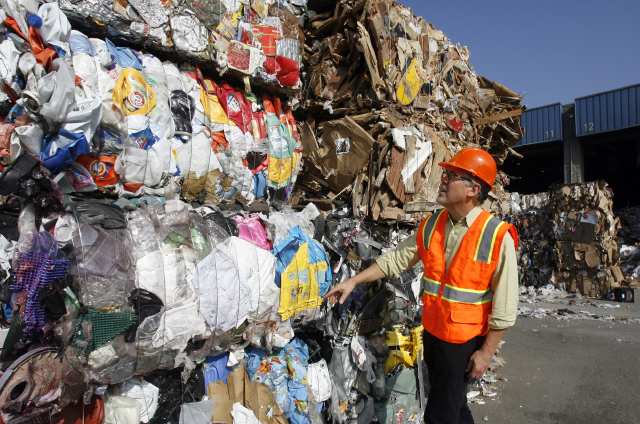
 Organic polymers can be used to create materials with very distinct properties (both good and bad). For example,
Organic polymers can be used to create materials with very distinct properties (both good and bad). For example,
thermoset materials resist heat and solvents, making them extremely durable and allowing them to be used in the oven. The downside is that, once they’re made, that’s it—no recycling. Thermoplastics are stable below a set temperature, but they can be melted, allowing them to be remade into new materials. Unfortunately, they don’t hold up very well to solvents.
Now, researchers are saying they’ve created a third option, one that acts like a thermoplastic at high temperatures but can hold up to most solvents. The material’s secret? An embedded catalyst that allows chemical bonds to constantly rearrange. The material’s desired properties can be tuned based on the polymer it’s made from and how much catalyst remains.
A bit like epoxy
The chemistry involved is similar to epoxy, which is a type of thermosetting polymer that solidifies irreversibly (the precise starting material is bisphenol linked to glycerol at each end). In the new material, molecules have four reactive sites that allow them to be crosslinked into a polymer by chemicals that carry two or more carboxylic acid groups. However, these reactions don’t go to completion, leaving lots of both the starting material and the crosslinker available for further reactions.
That means, as the authors note, that there’s a “chemical equilibrium between bond breaking and reforming” in the resulting polymer. Lower the rate of this reaction enough, and the system acts as a permanent polymer. Raise the reaction rate, and the polymer will start to rearrange itself as its components swap partners. “The key is to design the chemistry so that at high temperature, exchange reactions enable stress relaxation and malleability and upon cooling, the exchanges become so slow that the topology of the network is essentially fixed and the system behaves like a soft solid,” they write.
Achieving this involved incorporating a catalyst (zinc) into the material itself. By adjusting the concentration of the zinc, you can adjust the temperature at which the bond rearrangements occur (the faster this happens, the closer the material becomes to a fluid) . And, because the material is chemically bonded, it should hold up well when exposed to solvents.
The first test material was an elastic polymer that could be stretched to nearly double its length without breaking. When placed in a solvent, the material swelled but maintained its integrity. At sufficiently high temperatures, it’s able to flow; if the elastic is stretched and then heated, the strain goes away over time. It took two days for the strain to relax at 100°C; the authors calculate that works out to a relaxation time of about six years at room temperature.
Because the material could flow at high temperatures, the authors were able to slice or grind up the material and then heat it in an injection mold to recycle it into new devices. Alternately, the could take a simple object made of the polymer, heat small areas of it, and then reshape those into more complex forms; “welding” of two objects was also possible with localized heating.
By changing the crosslinking chemical, they were able to change the properties of the resulting polymer. A small change in chemistry got them a material that behaved like a hard epoxy resin, but underwent a glass transition at 80°C. By 200°C, it softened up enough to begin to creep. And at 240°C, it had softened so much that it was possible to take a ground powder of the material and recycle it by placing it in a mold under pressure. Once cooled, the new device was physically indistinguishable from the starting material.
I’m not quite ready to call this a wonder material. It may not dissolve in organic solvents, but the swelling that takes place doesn’t make it a useful container for solvents, and it’s not clear how to get the solvent back out afterwards. The dynamic nature of the crosslinking within the material also suggests there might be some unreacted chemicals left behind in the polymer that might gradually leach out, so it would be good to see some data on that.
But the basic idea looks quite promising, and anything that keeps materials from making a one-way trip from production to landfill is worth pursuing.
Source : http://arstechnica.com






